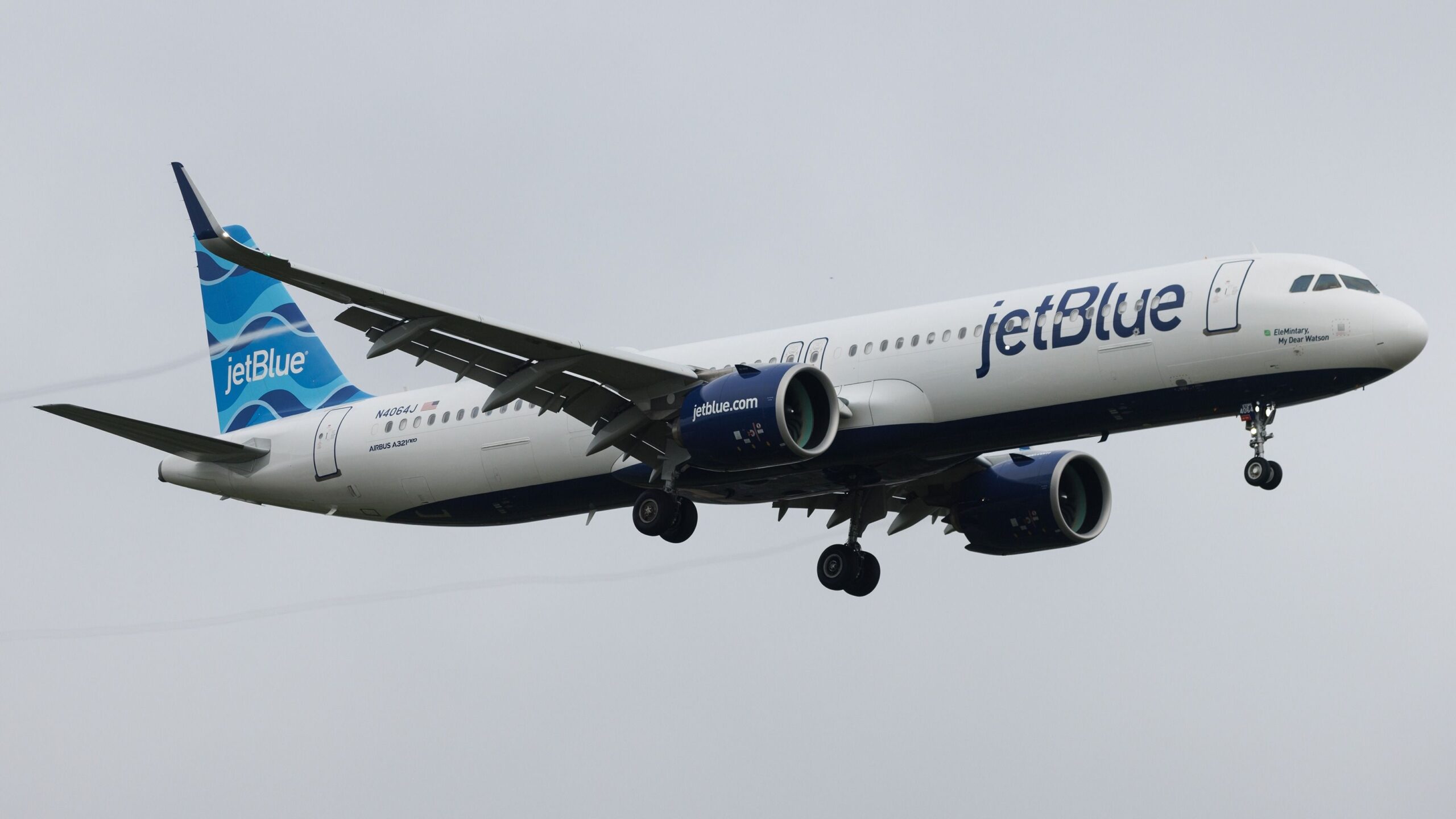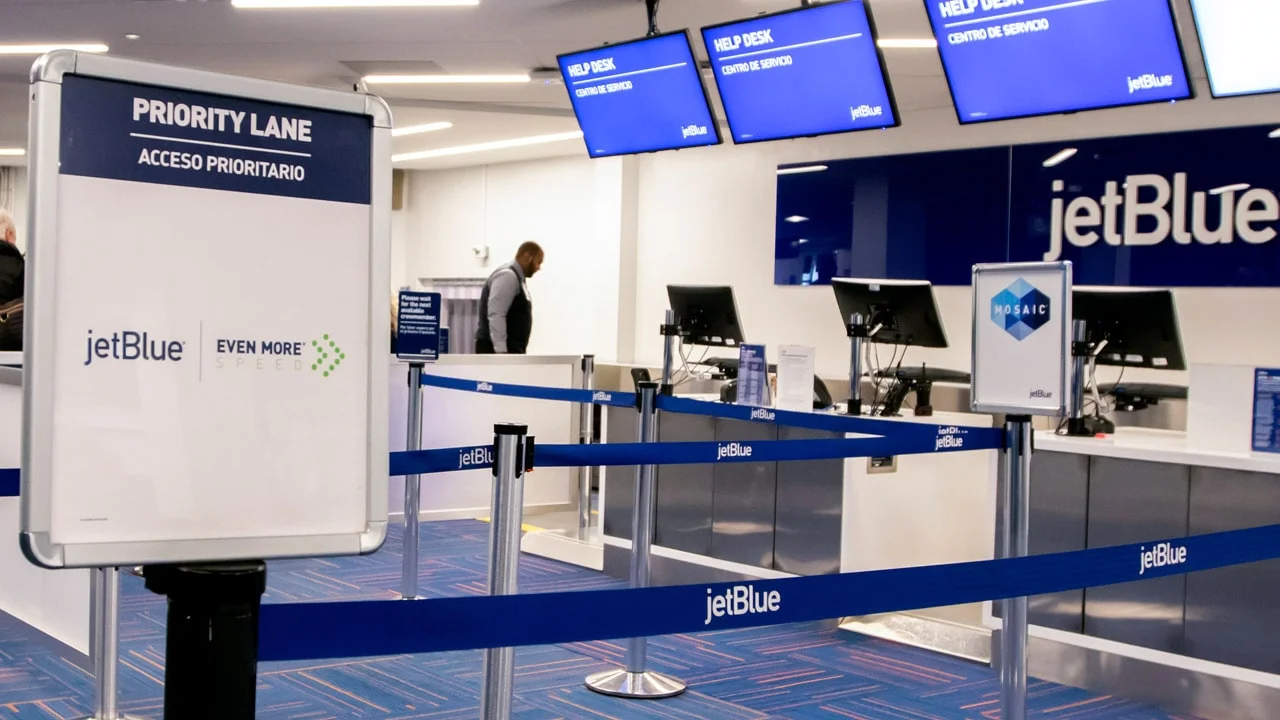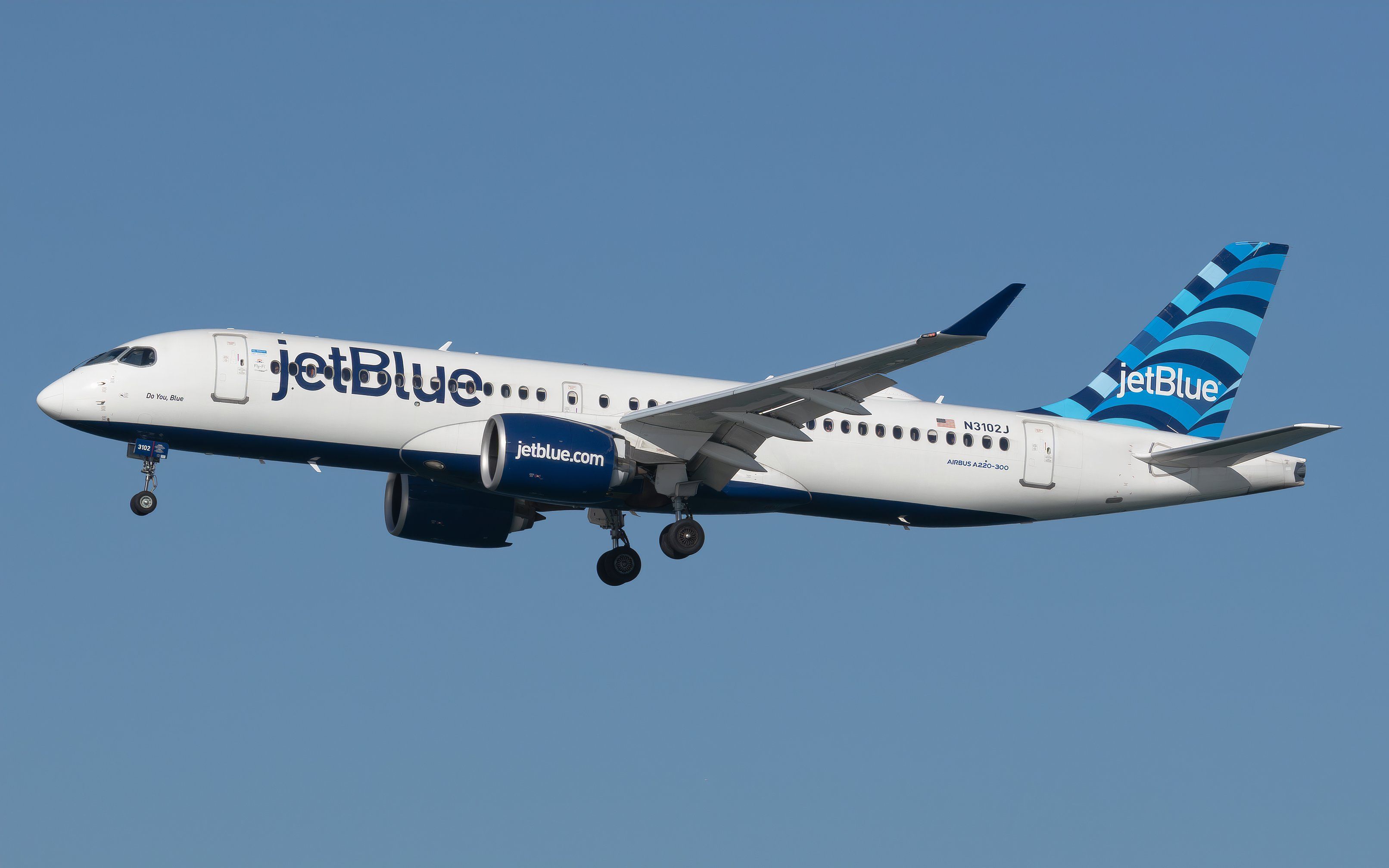JetBlue has updated its third-quarter guidance after benefiting from strong demand during the peak summer season. Having avoided much of the disruption during the recent global IT crash, the airline has no doubt been aided by the misfortune of other carriers, particularly Delta Air Lines.
JetBlue boosts Q3 guidance
According to a Reuters report, JetBlue’s stock has risen by around 6.5% since announcing its updated guidance for Q3 2024. The key points from the SEC filing, dated September 5th, include:
- Improved year-on-year revenue of -2.5%/1% (between a 2.5% decline and 1% growth), up from the previous range of a 5.5% to 1.5% decline.
- Reduced its bottom range for available seat miles (ASMs) year-on-year from a 6% to 5% decline, with upper range remaining the same at a 3% decline from Q3 2023.
- The carrier’s expected fuel price per gallon has also gotten cheaper, reducing from $2.82-$2.97 per gallon to $2.70-$2.80.
- This is on top of an improved outlook for its cost per available seat mile (CASM), excluding fuel, which has dropped from 6.0%-8.0% to 5.0%-7.0%.
JetBlue picked up many customers affected by the global systems outage in mid-July, owing to its strong operational readiness and—by sheer good luck—its reliance on older, legacy systems unaffected by CrowdStrike’s Falcon software.
Photo: JetBlue Airways
However, other airlines were badly hit by the outage, including American Airlines, Delta Air Lines and United Airlines. JetBlue said it “recognized the revenue uplift from the re-accommodation of customers affected by other airlines’ cancellations due to technology outages in July.”
It also pointed towards stronger bookings in Latin America and “continued progress from its previously announced $300 million worth of revenue initiatives.” The airline’s Latin American network has grown tremendously since 2019, with JetBlue now the US’ fourth-largest carrier in these markets based on seat capacity.
Operational improvements
While JetBlue was handed a stroke of luck with the CrowdStrike outage, it still had to ensure its own operations were running efficiently, particularly in light of more demand. The airline’s on-time performance (OTP) this summer was an impressive ten percentage points higher than 2023, so give credit where it is due.
Photo: Vincenzo Pace | Simple Flying
It has also been implementing its JetForward strategy, which aims to enhance its operations through a variety of approaches, including network restructuring and fleet simplification. Since the carrier’s attempted merger with Spirit Airlines formally ended in March, it has deferred delivery of 44 new Airbus aircraft and reduced its planned capital expenditures between 2025 and 2029 by approximately $3 billion.
It has been a busy month for JetBlue after the airline revealed plans to raise more than $3 billion in debt, tanking its shares by up to 20%. Part of the airline’s plan is to leverage its TrueBlue loyalty program, a move that other US carriers have made in the past.



